NAPA VALLEY, Calif. — Over a four-year period in the mid-1990s, the Napa County Commission on the Status of Women honored 40 underappreciated local women. Each of those honored wrote her own story and was photographed. Their stories were published in four booklets: “Generations of Caring, Profiles of Napa County Women.”
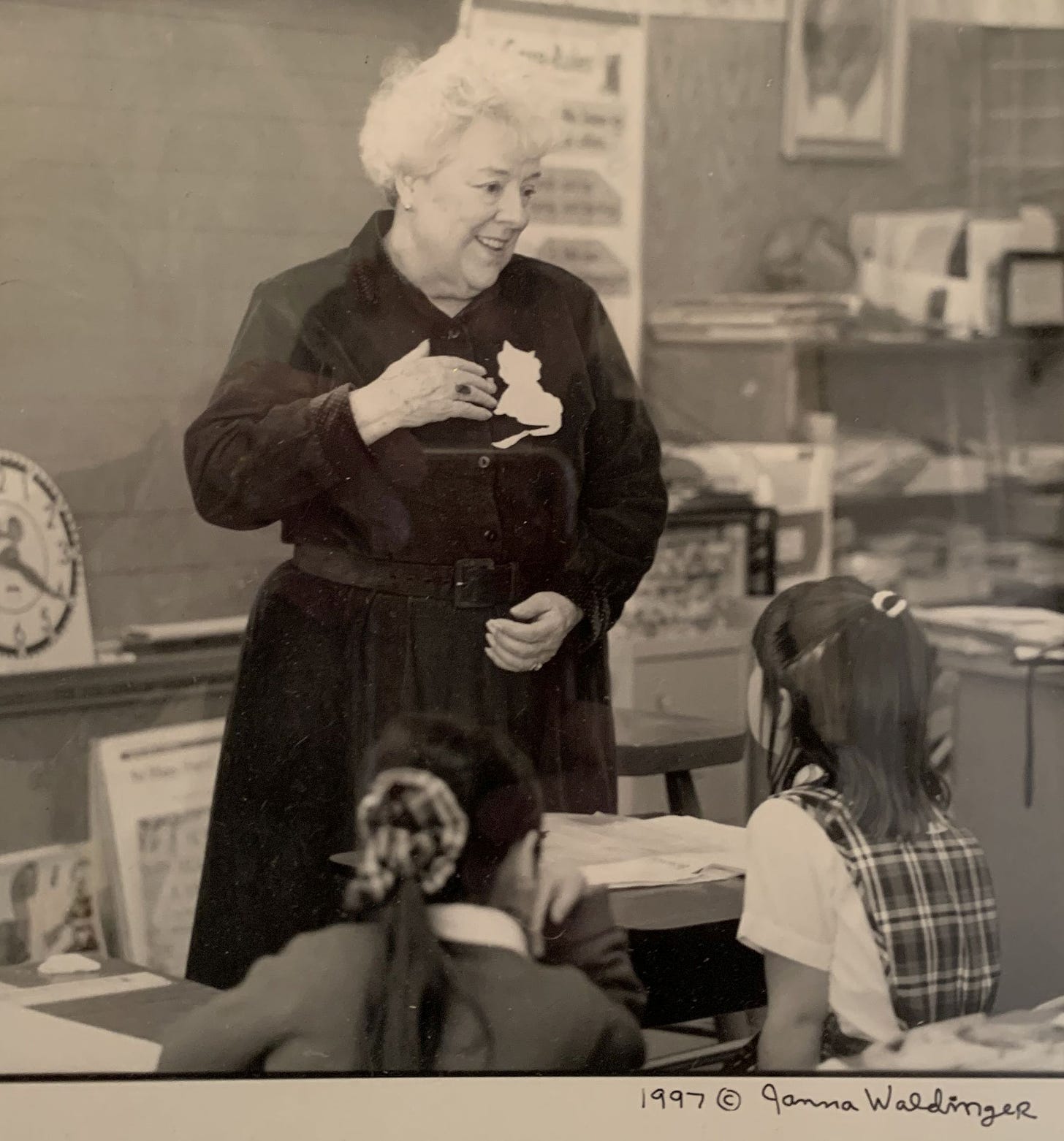
One of those who served on the commission was Jean Barstow.
“For several years the Napa County Commission on the Status of Women celebrated local women's history by collecting life stories from Napa County women,” she said. “Each commissioner picked a woman well-known to them to write their own story, so the writers came from varied backgrounds, and there was no imposed uniformity on political stance, style or content. The focus was not only on women in politics, although some leaders gave us inspiring stories. We published them in a booklet distributed at an annual March recognition event. Volunteer professional photographers took amazing shots of the women for the publication.” Two of those booklets from 1995-1996 are available at both the Napa County Library and Napa Valley College.
Sally Lacau spent four years on the commission. In 1995 she nominated her mother, Beatrice Jane Brown Warner.
“I nominated my mother because I felt like she was really a lot like other women who live a difficult life, raise children and work but really get no praise or recognition,” Lacau said.
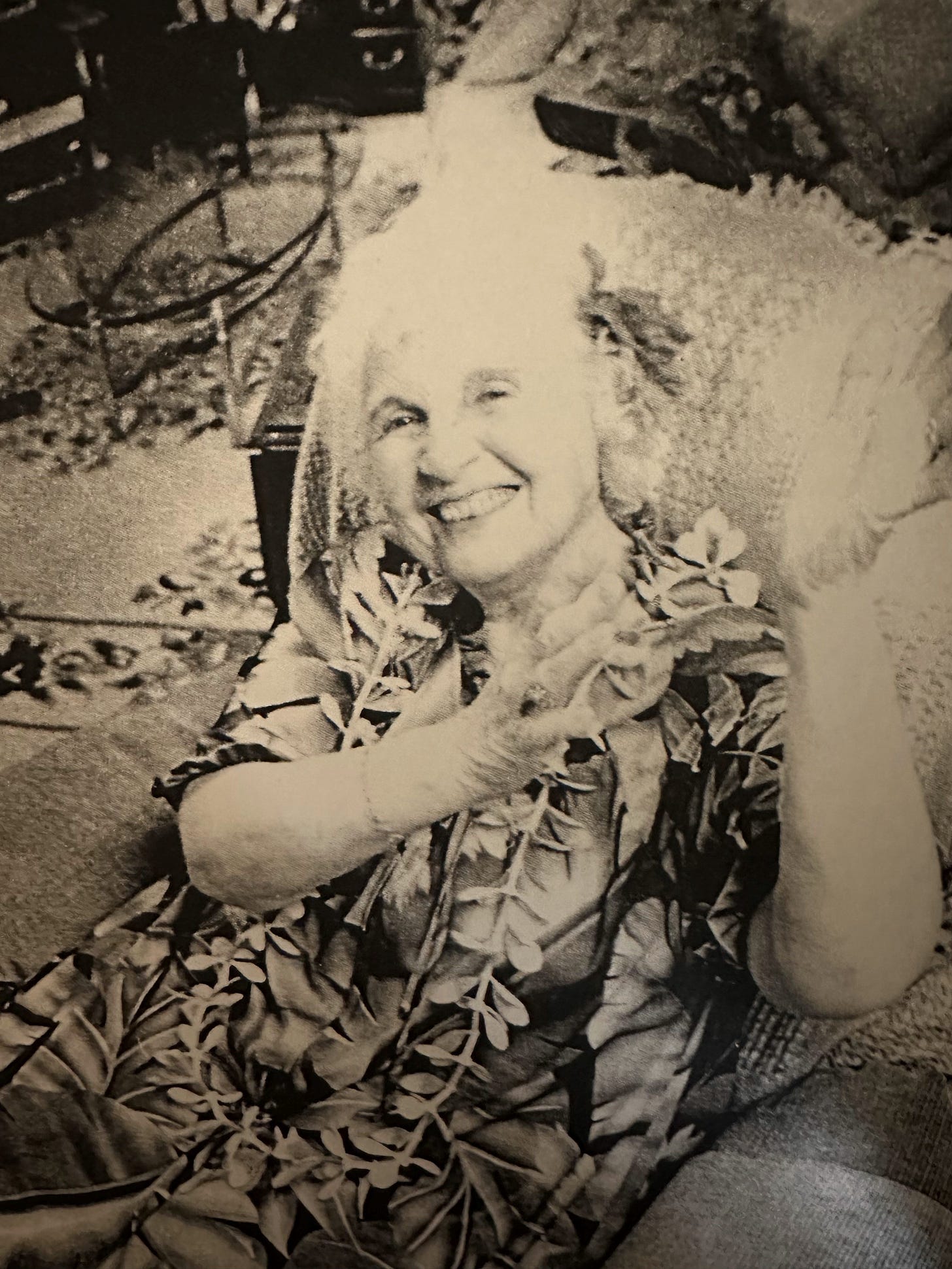
Lacau has lived in Napa for the past 50 years and soon will be 90 years old. Her mother had a tough life, one filled with challenges. Warner was born in 1917, the youngest of four children who grew up in a farm community on the Wabash River in southern Illinois. Warner’s parents divorced, so she and her mother ended up living with different family members. Warner met her husband and the two eloped when she was 16.
“And then I was born 10 months later,” Lacau said. “I had a sister and brother, and my mom and dad were great parents, even though they were young.”
When Lacau was 13, their house burned down and they lost everything. The family moved to a farm in the area, but it was a bad time.
“But, you know, she never complained and she always made the best of things,” Lacau said. “And she danced. She liked to dance and gave dance lessons.”
She knew how to sew as well as a tailor.
“Thank heaven for that, because my sister and I had the latest in clothing and everything, even though we had no money,” Lacau said.
Lacau’s father died in his 50s and left Warner with nothing. At that point, she got a job as a seamstress and lived with Lacau’s sister and then later on with Lacau in Napa.
“The thing about my mother,” Lacau said, “is she always encouraged us and she never acted like, oh, poor me. She was always friendly, always kind and happy. She provided us a really good home life, and I thought I should nominate her for that because she meant so much to me and my sister and brother.”
Warner gave several lessons to her daughter.
“I learned from her that money isn’t what makes you happy,” Lacau said. “Even though we grew up with very little, we were a happy family. I learned from her that you have to go on. And you have to make the best of things and that you will, at some point, have a good life. And that family is the most important thing to us.”
Warner died 14 years ago at the age of 94.
Others honored in 1995 were Nancy Garden, Alexis Handelman, Virginia Norton, Julie Pearce, Dorothy Searcy, Adris Troedson, Cathy Valenzuela, Ruth Von Uhlit and Sue Ziemski.
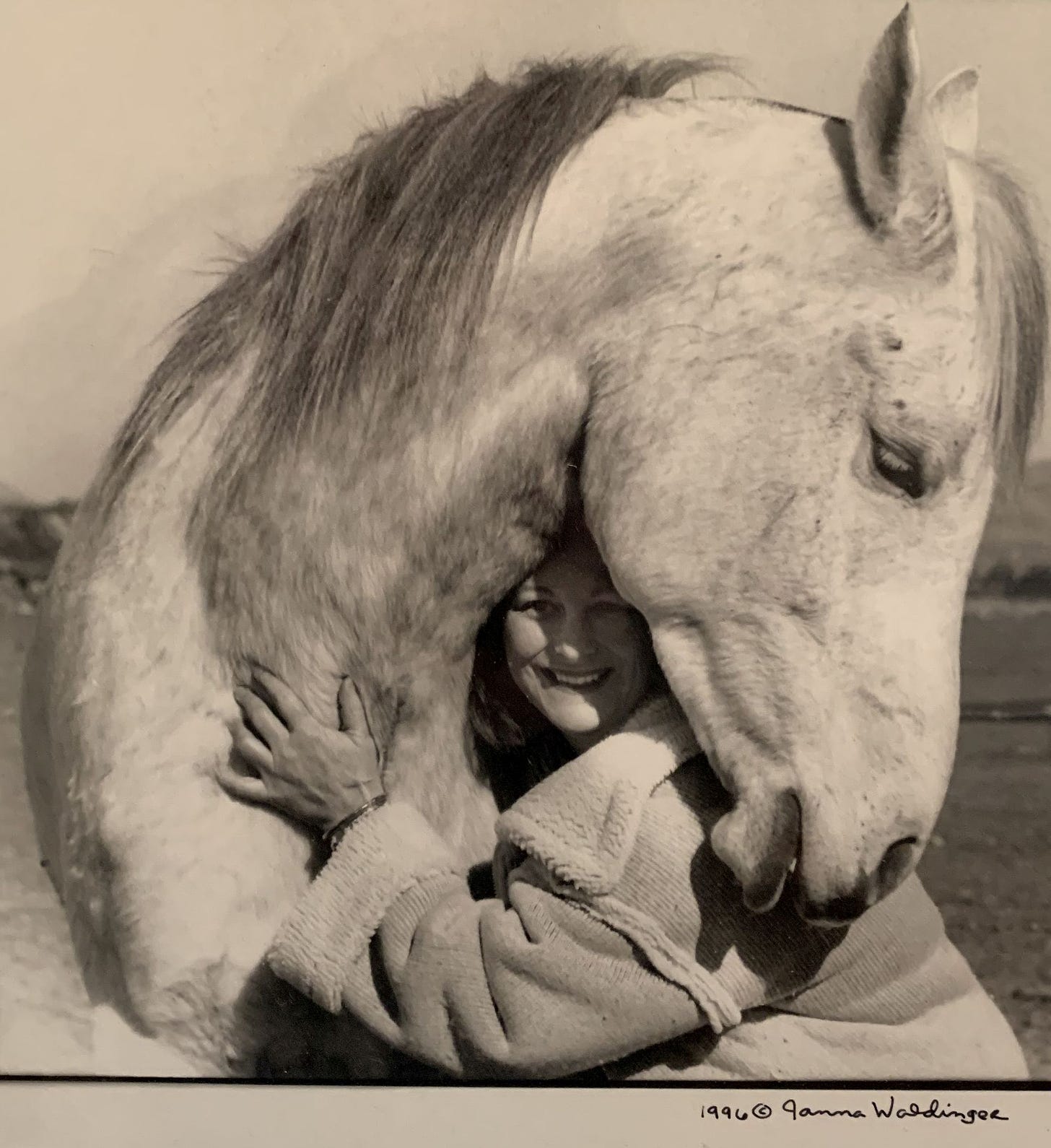
‘Amazing group of women’
When Eve Breckenridge applied to serve on the commission, she was living in Calistoga and owned the Miracle Bakery at 1353 Lincoln Ave., next to the Calistoga Bookstore and down the street from Pete’s Deli, now home to Calistoga Thai Kitchen. Today Breckenridge’s bakery remains a bakery, now home to Bella Bakery. Breckenridge said her bakery had the first espresso machine in Calistoga.
“When I bought it, the vendors would come in and people told me the vendors were betting on how long I would last as a single woman with two kids who’d never had a bakery in her life,” Breckenridge said. “We had lines down the street. It was an amazing, amazing business.”
She and her children worked at the business, and Breckenridge said the main reason she later sold it was that she didn’t want her children to be stuck there.
“I wanted them to go away to college and not feel like they had to work (in the bakery),” she said. “It was hard to find people who didn’t steal from you, so it was an easy decision to sell it.”
Breckenridge said the commission was made up of “an amazing group of women” who realized that “women in Napa County were not getting a lot of recognition for what they did. I mean, the people who would win Citizen of the Year or this or that tended to be men.”
So the commission members chose women who had done amazing things — taking care of lots of foster children, for example, or the woman who taught swimming lessons and worked as a volunteer for the library.
Commissioners honored two St. Helena residents — Nancy Garden, who is “certainly a force in St. Helena,” and Diane Dillon, before she began her 20-year stint (2002-2022) on the Napa County Board of Supervisors. In March, Sen. Bill Dodd honored Dillon as Napa County Woman of the Year.
For Breckenridge, interviewing people and letting them tell their story is incredibly important.
“I’ve worked for the Peace Corps and the Red Cross, so both of those things I know are important: Listening to people’s stories and writing them down as an acknowledgement of who they are,” she said. “That’s step No. 1. No. 2 is coming together. I worked at the Harvest Inn at the time, so we had our reception at the Harvest Inn. The women came with all of their families. So now it’s a public recognition of who they are and what they’ve done.”

In 1996, those honored were Dianne Aigaki, Sheila Daugherty, Ellie Hubbard, Dr. Olive Jack, Fran Lemos, Mildred Pearch, Patty Renfrow, Ginny Simms, Evelyn Trevethan and Mary Welch.
The following year, Dillon was honored, as were nine others: Thelma Brown, Jeanne Cervone, Laura Garcia, Dorothy Gard, Mary Groves, Mary Lou Holt, Sandi Perlman, Lynne Tuft and Nan Vaaler.
About Dorothy Searcy
When Barstow joined the commission, she was a newcomer to the Napa Valley. She saw an announcement in the local paper and applied. Serving on the commission “stirred my curiosity and my eagerness to connect up with other people,” she said.
The first person she interviewed was Dorothy Searcy, who served for two years on the Napa City Council and 10 years on the Napa Valley Unified School District.
Barstow said her experience with Searcy was “one of the things that glued me to the process for several more years because Dorothy Searcy was incredibly welcoming when she said she’d like to go through with the process and have her story be part of the collection.” Barstow remembers sitting in Searcy’s living room and Searcy’s “gracious way of talking about her life. In a one-on-one setting like that it became very intimate and personal,” she said. “For years afterward when I happened to run into her, she would still make a comment or recognize me and reflect back that we had that conversation.”
Searcy died in January 2003 at the age of 82. Her husband, Curt, remembered her as a woman of great honesty and determination, according to a story in the Napa Valley Register. They were married nearly 50 years.
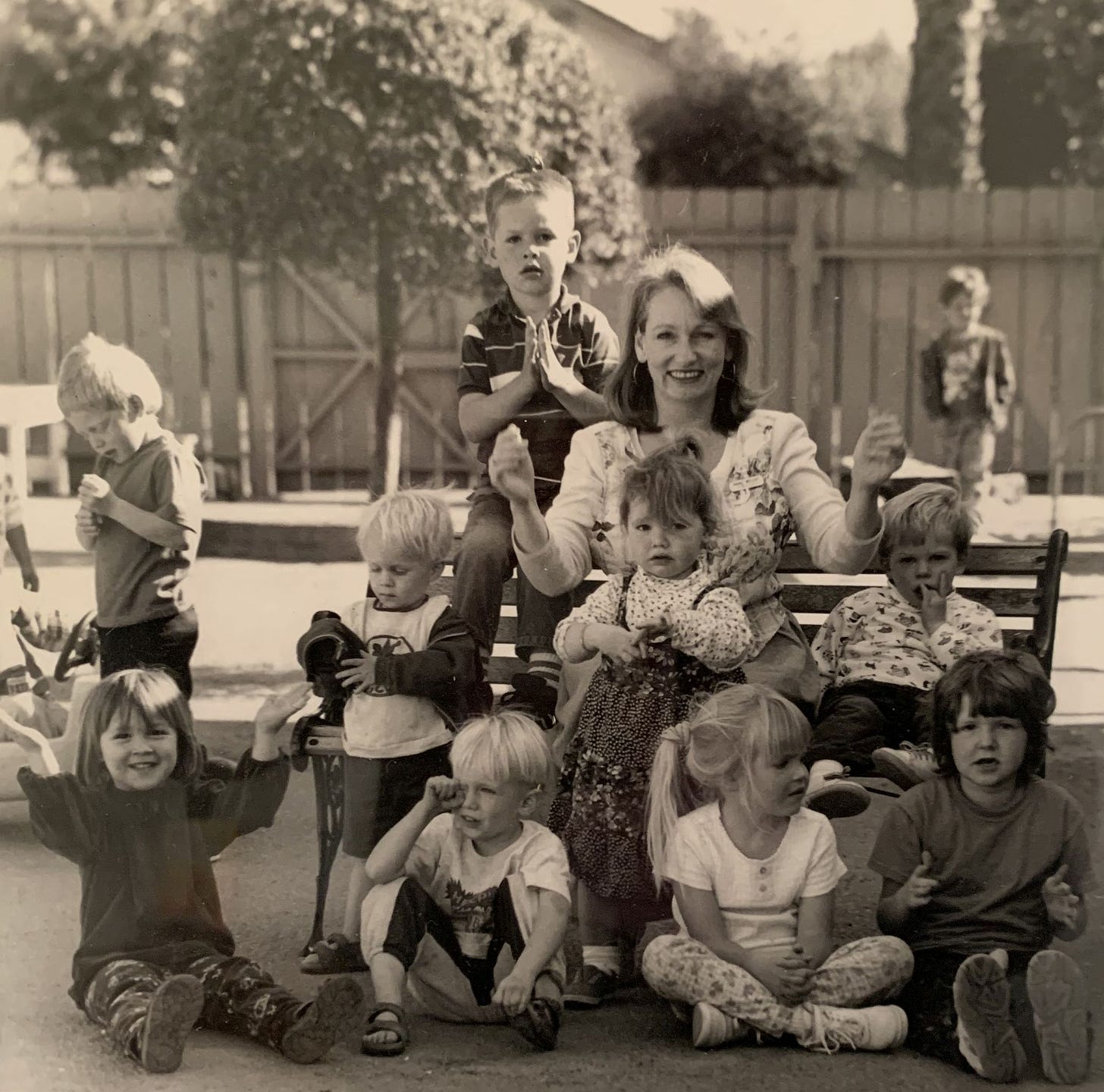
Barstow worked with Dillon, who at the time spoke about her long history and her family’s ties to the Napa Valley.
“Diane was on the verge of getting into her long service on the Board of Supervisors and was just a very, very open-hearted and thoughtful person,” Barstow said. During those four years she also worked with Cathy Valenzuela and Ellie Hubbard.
“I enjoyed working with them all,” Barstow said. “It was just a spectacular experience. I think if I were to give you a few quick words to describe what it was like being in that group, they are lots of energy, lots of good communication and a sincere commitment to shining a light on women who hadn’t been recognized before or were underappreciated women. Through that period of four years, there was never a time when I regretted my decision to volunteer this way. It was all just a fantastic experience in working with new people who became friends for many years and discovering through our project for Women’s History Month what other women in the valley had to say about their experiences.”
She added, “The fun and engaging work we all did on this project now seems like an oasis of innocence and optimism. So many different women, so many different backgrounds and ideas. We even had one male commissioner whose mother gave us her life story. This is all very reflective of the basic premise that differences are an opportunity of mutual learning rather than a scary warning signal of likely division, defensiveness and possible conflict.”
Professional photographer volunteers
Janna Waldinger and her partner, Lowell Downey, owners of Art & Clarity Photography, first came to Napa in January 1994. She noticed an article about the Napa County Commission on the Status of Women in the newspaper and saw that it was a man who took the photos of the honorees. She called the commission, said she had just moved to town, was a third-generation professional photographer and would like to offer her services. She took photos for the booklets in 1996 and 1997.
“What was so special is the emphasis on unsung heroes, women that were doing important things that were otherwise not being recognized,” Waldinger said.
Beyond the booklets with photos and stories, Waldinger said she wanted to take it to the next level and create a public exhibition of the work. The photos and stories were displayed at the ABC Bakery in Napa, at the Diner in Yountville and at Waldinger’s historic 1879 home in Napa.
The reaction to the public exhibits was very positive.
“I think that the women who were being honored appreciated it,” said Waldinger, who then made 11-by-14-inch enlargement prints that she gave to each of the women. The photos she took were special: Ellie Hubbard, for example, posed with a horse that has been an important part of her life, and the photograph of Thelma Brown, a much-beloved music teacher, shows her conducting in her living room. For each of the portraits it was important for Waldinger to photograph the subjects in their location to further the subject’s story “or to be a narrative of their life commitment,” she said.
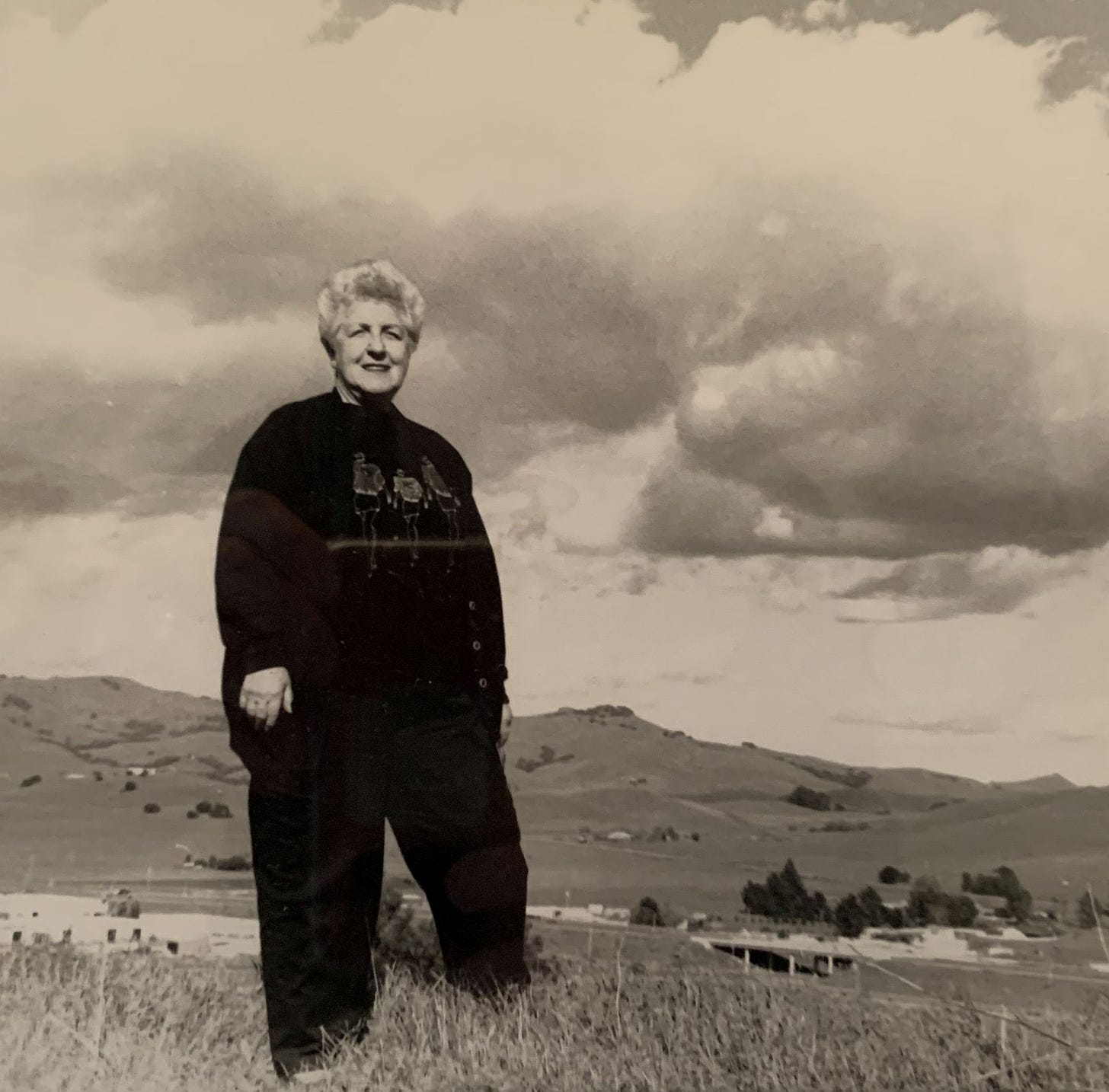
The photo of American Canyon’s Fran Lemos in 1996 was taken on top of a hill “because she and her sister were so dedicated to the proper development of the area and having it be honored,” Waldinger said.
Beyond honoring the women with her professional photographs, being on the commission “changed the trajectory of my life,” Waldinger said. She had just arrived in Napa and didn’t know anyone before volunteering to take the photos.
“Some of the women who were on the commission asked me if I knew this women leader and I didn’t,” Waldinger said. “So two of the women arranged for a meeting in my home to meet some other women leaders in the community.”
One of the women was Barbara Nemko, Napa County superintendent of schools. And it turned out the woman who represented the downtown area was moving out of town.
“I got a call from Barbara, and she told me the position was open and asked if I was interested in it.” Waldinger said she wanted to know more about the position, and Nemko responded that the deadline for filing was in 24 hours. Waldinger said, “And so I did file, and I have been serving 26 years as an elected official. And so I guess that means six elections that I have won. And so this idea of women leaders supporting women leadership really works.”
Those honored in 1998 included Tala De Wynter, Gloria Alicia Garcia Reyes, Becca Smith, Jane Smith, Ellen Streich, Ruthanne Svendsen, Lois Swanson, Eleanor Valenzuela, Micki Voisard and Cindy Claymore Watter.
Twenty different people served on the commission in the four years from 1995 to 1998. They included Toni Ahlgren, Barstow, Breckenridge, Linda Burgess, Darlene Friedman, Renate Halliday, Dorothy Handy, Donna Jenkins, Karla Jensen, Chris Kelly, Lacau, Christine Lieber, Maria Madsen, Kathi Metro, Connie Millimaki, Sam Reyes Sr., Carolyn Rhondeau, Linda Schoppert, Janet Van Brocklin and Laurie Yoder.
The Napa County Board of Supervisors established the commission on Aug. 24, 1976. It has since disbanded.
Accomplishments
In its 1995 booklet, a list of the commission’s accomplishments is printed:
Formed a coalition of community groups and county agencies to deal with the problems of battered women. Later became Napa Emergency Women’s Services
Started a support group of and for battered women
Continued working with NEWS to develop an Outreach and Public Education Program
Established a local child-care information and referral service in cooperation with the Sonoma County Child-Care Council
Held community forums on women and employment, women and credit, women and alcoholism, women and rape and pornography
Investigated individual cases of discrimination against women, including sexual harassment on the job and non-compliance with Title Nine
Co-sponsored events with Napa Women’s Political Caucus and the Women’s Re-entry Program
Formed a panel to review films on rape for the Napa County Medical Society School Health Committee
Wrote a report, “Attracting Women Applicants to Apprenticeship Programs for the U.S. Department of Labor”
Wrote a report on “Conditions in Women’s Jails” for the Assembly Select Committee on Corrections
Held public meetings covering issues such as domestic violence and problems faced by elderly women
Worked with volunteers to train women to perform household repairs and to help women develop needed skills to improve and maintain their housing
Throughout March 1994 the commission and radio station KVON presented short oral documentaries of Napa County women’s accomplishments
The commission also displayed “Women in History” photographs during March at local businesses and banks
On May 26, 1994, NCCSW, NOW and AAUW sponsored a forum where city council, county supervisors and district attorney candidates met to heighten awareness of current women’s issues facing the community. Topics included the plea bargaining done in conviction cases, affordable housing, increase in business/jobs and slow growth.
In July, the commission held a Women’s Film Festival at the Napa City-County Library and in September at the Women’s Center, St. Helena
In October 1994, a forum on Domestic Violence was held in collaboration with the Domestic Violence Council and NEWS.
If today’s story captured your interest, explore these related articles:
Valley Players champion mature women and their untold stories
Three Napa Valley women champion arts and community projects
Sunday E-dition: Women’s History Month, her stories discovered
Tickets remain for Calistoga Soroptimists’ crab feed to support women's education
Dave Stoneberg is an editor and journalist who has worked for newspapers in both Lake and Napa counties.





https://www.blurb.com/b/4218346-new-york-to-st-helena-reflections-of-a-happy-life